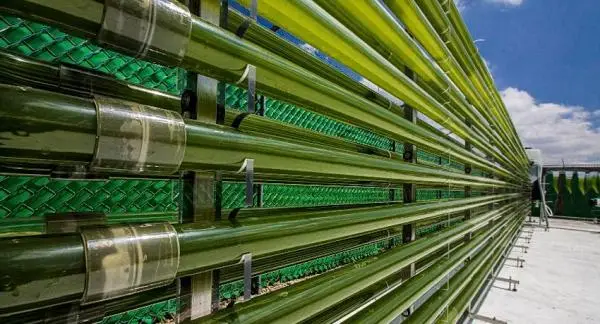Microalgae open up a world of possibilities when it comes to obtaining sustainable and healthy renewable energies, raw materials, or active ingredients for a myriad of uses, such as food, cosmetics, or pharmaceuticals.
Produce biofuels
Microalgae can produce biomass for the manufacture of different types of biofuel, such as biodiesel, ethanol, methane, or hydrogen. Its production usually begins with the selection of the species of microalgae to be used, generally from those available in the local environment.
Subsequently, the design and implementation of the cultivation system are carried out, periodically carrying out the harvest and the extraction of the oil from it. From this, finally, the raw material used in the unit has obtained the production of biofuel.
As producers of green fuel, it is decisive that microalgae are photosynthetic microorganisms with a unicellular structure since thanks to it they grow rapidly. Basically, they reproduce through photosynthesis, converting sunlight into chemical energy naturally, that is, as part of their life cycle.

Polluted water cleaning
Among other advantages of the cultivation of microalgae is worth noting its ease when growing them. In addition to being able to develop in tanks to be located in a thousand places, such as roofs, warehouses, or spaces specially designed for this purpose, they feed on nutrients that are pollutants.
Among other sources from which to obtain them, in addition to CO2 from the air, we find wastewater a very interesting resource. On the one hand, it allows the use of water not suitable for human consumption for its cultivation, while at the same time it can be cultivated in natural places solved to improve the quality of degraded water.

Sustainable cosmetics
The cultivation of cyanobacteria makes it possible to improve cosmetic formulas, providing greater tolerance to possible allergies, that is, minimizing adverse reactions and also achieving greater moisturizing power.
At an environmental level, it helps the formulation to be biodegradable, although in the end, everything will depend on the rest of the ingredients, of course. Theirs, however, is designing entirely biological formulations to maximize their potential benefits.

CO2 absorption
Another of the most outstanding utilities of microalgae takes advantage of their action as carbon dioxide sinks. The explanation is very simple since they are organisms that capture solar energy and accumulate it in their fats through photosynthesis, thereby absorbing CO2 and emitting oxygen.
By absorbing or trapping that CO2, we clean interior or exterior atmospheres and obtain nutrients for the microalgae. It is a clean technology that does not generate toxic or dangerous waste, providing very high yields. From these microalgae, they can also be used in very different processes.
Climatize and insulate buildings
Obtaining green energy for the generation of energy for heating and air conditioning is the objective achieved in the installation that we find in an avant-garde four-story building that rises in the city of Hamburg, in Germany.
Named Bio Intelligent Quotient house produces energy through its original facade, partially covered with thin glass panels that make the role of culture containers for automated from microalgae.
The location on the façade is key, as this can give them the sun throughout the day (they are adjustable panels), necessary to carry out photosynthesis and thus grow faster, while acting as an insulator from cold and heat, in addition, noise, which also achieves greater energy efficiency.

Endless possibilities
These five uses are far from exhausting the possibilities of exploitation of microalgae. Among other applications, we can use them as raw materials for the manufacture of biofertilizers, food supplements, vitamins, pigments, and a long list of compounds with great applications in very different industrial sectors.
What’s more, its cultivation allows multiple exploitations, with which the advantages are even greater. On the one hand, microalgae can absorb CO2 from industry greenhouse gas emissions to later produce one or other products.
The possibilities continue to increase as new processes are discovered or existing ones are developed. From producing fats, oil, natural dyes, fatty acids, oil, sugars, organic fertilizers, or antioxidants, let’s say, to the processing of biomass for energy.


